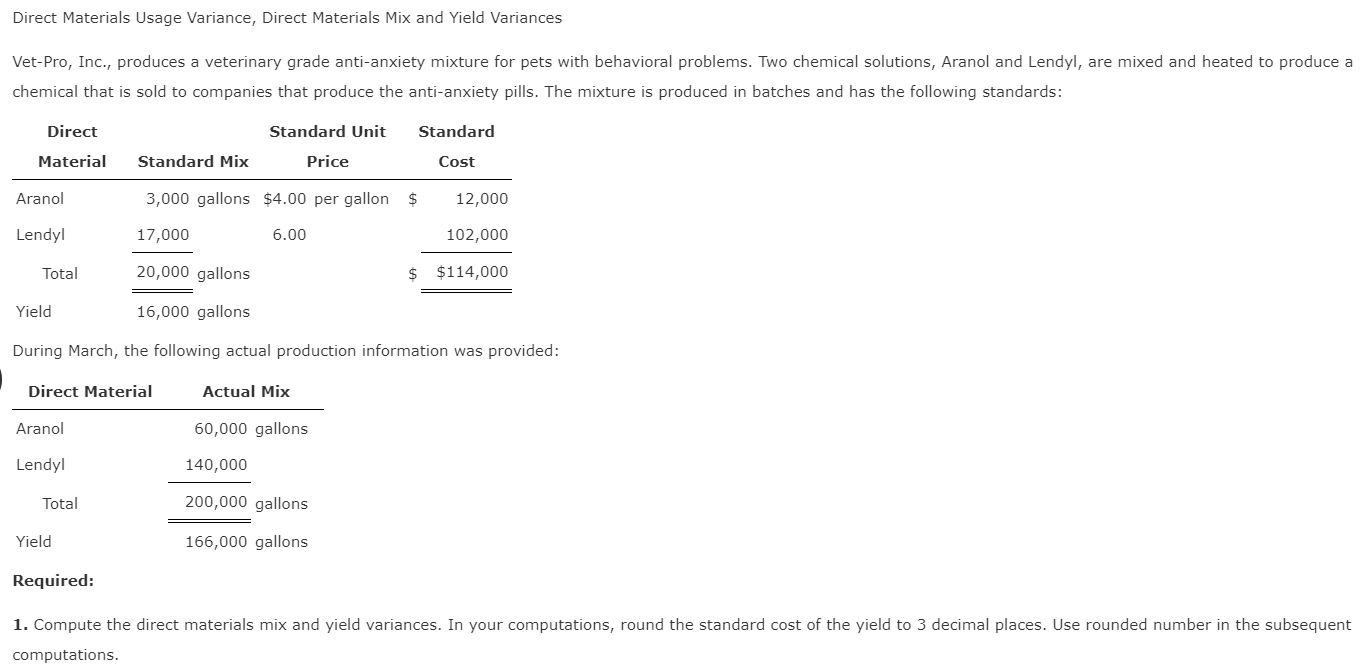
In this case, two elements are contributing to the unfavorable outcome. Connie’s Candy paid $1.50 per hour more for labor than expected and used 0.10 hours more than expected to make one box of candy. The same calculation is shown as follows using the outcomes of the direct labor rate and time variances. In this case, the actual rate per hour is $7.50, the standard rate per hour is $8.00, and the actual hour worked is 0.10 hours per box. This is a favorable outcome because the actual rate of pay was less than the standard rate of pay. As a result of this favorable outcome information, the company may consider continuing operations as they exist, or could change future budget projections to reflect higher profit margins, among other things.
Direct Labor: Standard Cost, Rate Variance, Efficiency Variance
Direct labor rate variance is equal to the difference between actual hourly rate and standard hourly rate multiplied by the actual hours worked during the period. The variance would be favorable if the actual direct labor cost is less than the standard direct labor cost allowed for actual hours worked by direct labor workers during the period concerned. Conversely, it would be unfavorable if the actual direct labor cost is more than the standard direct labor cost allowed employer payroll tax obligations for tipped employees for actual hours worked. The first step in the calculation is determining the labor rate variance. This is achieved by subtracting the standard labor rate from the actual labor rate and then multiplying the result by the actual hours worked. For example, if the standard labor rate is $20 per hour and the actual rate paid is $22 per hour, with 1,000 hours worked, the labor rate variance would be ($22 – $20) x 1,000, resulting in a $2,000 unfavorable variance.
Direct labor rate variance
Usually, direct labor rate variance does not occur due to change in labor rates because they are normally pretty easy to predict. A common reason of unfavorable labor rate variance is an inappropriate/inefficient use of direct labor workers by production supervisors. If the total actual cost is higher than the total standard cost, the variance is unfavorable since the company paid more than what it expected to pay. Jerry (president and owner), Tom (sales manager), Lynn(production manager), and Michelle (treasurer and controller) wereat the meeting described at the opening of this chapter. Michellewas asked to find out why direct labor and direct materials costswere higher than budgeted, even after factoring in the 5 percentincrease in sales over the initial budget.
Total Direct Labor Variance
The overall labor variance could result from any combination of having paid laborers at rates equal to, above, or below standard rates, and using more or less direct labor hours than anticipated. In this case, the actual hours worked per box are 0.20, the standard hours per box are 0.10, and the standard rate per hour is $8.00. This is an unfavorable outcome because the actual hours worked were more than the standard hours expected per box. As a result of this unfavorable outcome information, the company may consider retraining its workers, changing the production process to be more efficient, or increasing prices to cover labor costs. In this case, the actual hours worked per box are \(0.20\), the standard hours per box are \(0.10\), and the standard rate per hour is \(\$8.00\).

Following is an illustration showing the flow of fixed costs into the Factory Overhead account, and on to Work in Process and the related variances. A good manager will want to explore the nature of variances relating to variable overhead. It is not sufficient to simply conclude that more or less was spent than intended.
- Training employees in these methodologies not only boosts productivity but also fosters a culture of continuous improvement, which is essential for long-term variance reduction.
- By accurately forecasting labor needs based on historical data and market trends, companies can better align their staffing levels with production demands.
- At first glance, the responsibility of any unfavorable direct labor efficiency variance lies with the production supervisors and/or foremen because they are generally the persons in charge of using direct labor force.
- This suggests inefficiencies in the production process, possibly due to inadequate training or outdated equipment.
- Accurate variance analysis thus becomes a critical tool for financial managers aiming to maintain fiscal discipline and operational efficiency.
These methodologies focus on streamlining processes and eliminating waste, thereby improving labor efficiency. For example, Lean techniques can help identify bottlenecks in production that cause delays, while Six Sigma can provide a data-driven approach to reducing errors and rework. Training employees in these methodologies not only boosts productivity but also fosters a culture of continuous improvement, which is essential for long-term variance reduction. Additionally, labor mix variance plays a role, particularly in environments where multiple types of labor are employed.
The 21,000 standard hours are the hours allowed given actualproduction. For Jerry’s Ice Cream, the standard allows for 0.10labor hours per unit of production. Thus the 21,000 standard hours(SH) is 0.10 hours per unit × 210,000 units produced. This reflects the standard cost allocation of fixed overhead (i.e., 10,200 hours should be used to produce 3,400 units). Notice that this differs from the budgeted fixed overhead by $10,800, representing an unfavorable Fixed Overhead Volume Variance.
Later in Part 6 we will discuss what to do with the balances in the direct labor variance accounts under the heading What To Do With Variance Amounts. Direct labor efficiency variance pertain to the difference arising from employing more labor hours than planned. Note that in contrast to direct labor, indirect labor consists of work that is not directly related to transforming the materials into finished goods. Examples include salaries of supervisors, janitors, and security guards.
By showing the total direct labor variance as the sum of the two components, management can better analyze the two variances and enhance decision-making. Labor variance is a multifaceted concept that encompasses several key components, each contributing to the overall difference between expected and actual labor costs. One primary element is the labor rate variance, which arises when there is a discrepancy between the standard wage rate and the actual wage rate paid to employees. This can occur due to changes in wage agreements, overtime payments, or shifts in the labor market that affect wage levels. In other words, when actual number of hours worked differ from the standard number of hours allowed to manufacture a certain number of units, labor efficiency variance occurs. All tasks do not require equally skilled workers; some tasks are more complicated and require more experienced workers than others.
